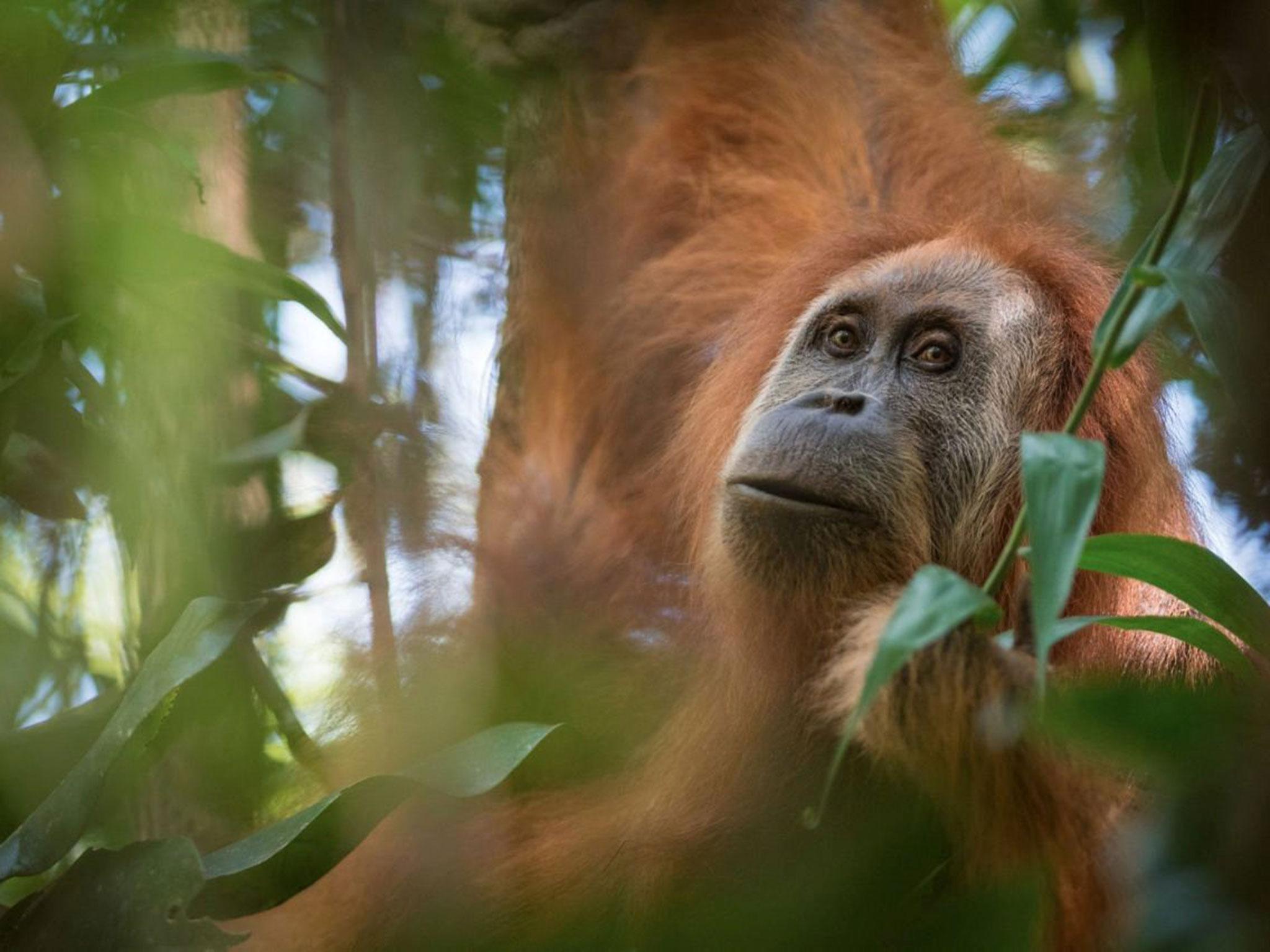Scientists find new orangutan and it is already the most endangered great ape in the world
‘If steps are not taken quickly to reduce current and future threats to conserving every last remaining bit of forest, we may see the discovery and extinction of a great ape species within our lifetime’

Your support helps us to tell the story
From reproductive rights to climate change to Big Tech, The Independent is on the ground when the story is developing. Whether it's investigating the financials of Elon Musk's pro-Trump PAC or producing our latest documentary, 'The A Word', which shines a light on the American women fighting for reproductive rights, we know how important it is to parse out the facts from the messaging.
At such a critical moment in US history, we need reporters on the ground. Your donation allows us to keep sending journalists to speak to both sides of the story.
The Independent is trusted by Americans across the entire political spectrum. And unlike many other quality news outlets, we choose not to lock Americans out of our reporting and analysis with paywalls. We believe quality journalism should be available to everyone, paid for by those who can afford it.
Your support makes all the difference.Scientists say they have found a new species of orangutan – and it is already in danger of extinction.
There are just 800 of the species left, making it the most endangered great ape species now known, the researchers said. And, they added, its habitat is being destroyed at such a rate that it might soon be entirely extinct.
Found in upland forests in north Sumatra, in Indonesia, the Tapanuli orangutan (pongo tapanuliensis) was originally considered to be part of the Sumatran orangutan population, but the discovery of a separate species means it is considered the most endangered of all great ape species.
“If steps are not taken quickly to reduce current and future threats to conserving every last remaining bit of forest, we may see the discovery and extinction of a great ape species within our lifetime,” they said.
It’s the first great-ape species to be proposed by scientists in nearly 90 years. Previously, science has recognised six great-ape species: Sumatran and Bornean orangutans, eastern and western gorillas, chimpanzees and bonobos.
The research is based on analysis of the skeleton of an adult male killed in a conflict with villagers, a genetic study indicating the population’s evolutionary split from other orangutans occurred about 3.4 million years ago and analysis since 2006 of behavioural and habitat differences.
The primates are confined to a range of about 1,100 square kilometers (425 square miles) in the Batang Toru forest in the Tapanuli districts of northern Sumatra. Historically, the population has probably been isolated from Sumatran orangutans further north for 10,000 to 20,000 years, based on the most recently detectable influx of male genes from outside, according to the genetic study.
Aside from genetic evidence and the physical differences that are most apparent in comparison with Bornean orangutans, other unique characteristics include diet, restriction of habitat to upland areas and the male’s long call.
Primatologist Russell Mittermeier, head of the primate specialist group at the International Union for the Conservation of Nature, called the finding a “remarkable discovery” that puts the onus on the Indonesian government to ensure the species survives.
Mittermeier, who was not one of the 37 authors of the study, said he was “very excited” by the research.
Last year, the IUCN classified Bornean orangutans as critically endangered due to a precipitous population decline caused by destruction of their forest habitat for palm oil and pulp-wood plantations. Sumatran orangutans have been classified as critically endangered since 2008.
Matthew Nowak, one of the study’s authors, said the Tapanuli orangutans live in three pockets of forest that are separated by non-protected areas.
“For the species to be viable into the future, those three fragments need to be reconnected via forest corridors,” he said.
Additionally, the authors are recommending that development plans for the region including a hydro power-plant be stopped by the government.
“It is imperative that all remaining forest be protected and that a local management body works to ensure the protection of the Batang Toru ecosystem,” Novak said.
The Batang Toru orangutan population was found during a field survey by researcher Erik Meijaard in 1997 and a research station was established in the area in 2006.
It was not until 2013, when the adult male skeleton became available, that scientists realised how unique the population was, which sparked the largest genomic study of wild orangutans ever carried out to provide further evidence of a third orangutan species.
There is no standardised international system for recognition of new species, but to be taken seriously a discovery requires, at very least, publication in a credible peer-reviewed scientific journal.
Additional reporting by agencies
Join our commenting forum
Join thought-provoking conversations, follow other Independent readers and see their replies
Comments